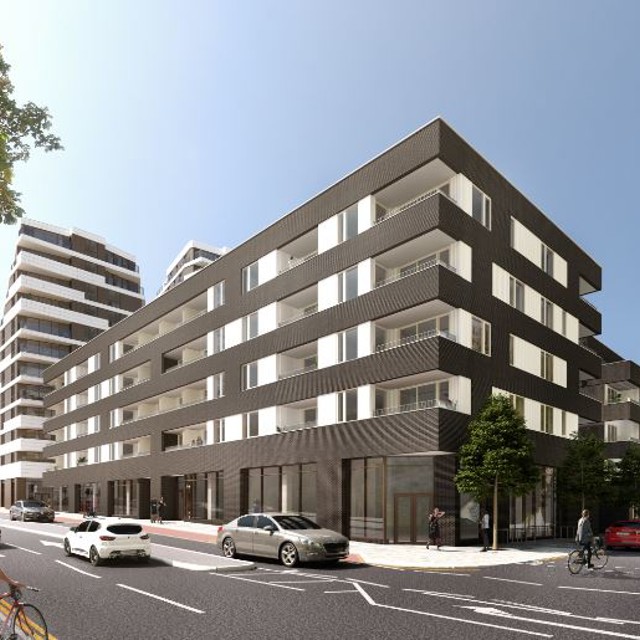When considering the combustible nature of materials on high rise buildings over 11 metres, it is important to think carefully about the specification of rainwater products and external fittings. Here, we look at the benefits of aluminium for rainwater and eaves solutions compared to PVC options.
When it comes to the construction or refurbishment of buildings and ensuring a robust approach to fire safety, the focus is, understandably, often on the cladding. However, when dealing with the external envelope, there are of course other components that may contribute to the spread of fire, including rainwater systems, eaves solutions and balcony components. As such, making informed decisions about the product chosen – including the material it’s made from – as well as remaining clear on the correct building requirements is absolutely crucial.
Guidance and regulations
First of all, guidance for designing and specifying fire safe rainwater systems can be found in Approved Document B of the Building Regulations in England, and Wales and Section 2 of the Building Standards in Scotland.
The June 2022 amendments to Approved Document B, prompted by the findings of the Grenfell Tower enquiry, banned the use of combustible materials on all residential buildings above 11m in height or six storeys. Instead only the use of non-combustible materials (class A1 or A2-S1,d0) are permitted. The amendment also states that “the potential impact of any products incorporated into or onto the external walls” should be considered, meaning that rainwater systems, eaves solutions and balcony components must be included in this.
Similarly, section 2 of the Building Standards for Scotland states that any ‘specified attachment’ – including balconies, rainwater systems, facias and other external fittings – should be constructed of a material that is at least A1 or A2 rated under the European combustibility classification. However, unlike the English and Welsh guidance, in Scotland, this requirement extends to both domestic and non-domestic buildings, as long as they are 11m or taller.
To comply with current fire safety standards, Marley Alutec has launched updated versions of two of its popular Elite aluminium balcony rainwater outlets, which can be adapted on site to meet different requirements. As a non-combustible A2,S1-d0 fire-rated product, these outlets are ideal for use on all types of residential buildings, including high-rise developments over 11 metres.
The new Elite balcony outlets, based on the Alutec DR360 and DR460 outlets, now include a longer aluminium 750mm spigot as standard, which can easily be cut to the required length on site.
Material specification
Finally, the material will of course have a fundamental impact on how it will perform in a fire. Although, PVC has been a popular choice for rainwater systems and eaves solutions for many years, because of its combustible nature it can allow fire to travel across the external surfaces of a building, as well as onto neighbouring buildings as the plastic melts and burning droplets are released.
Aluminium on the other hand, is classified as A1 non-combustible and meets the requirements of the legislation, providing the ideal solution for rainwater and eaves solutions, as well as balcony outlets.
Aluminium also has a number of other benefits including durability and longevity. It features a naturally occurring protective oxide layer, which protects the product from rust, even if the guttering, facia or soffit is damaged. As a result, aluminium products require minimal maintenance and have a functional life expectancy of 50+ years, offering the ultimate ‘fit and forget’ solution.
However, it is important to remember that not all aluminium provides the same level of strength and performance. At Marley Alutec, we would advise only specifying marine grade aluminium products as these deliver a longer, issue-free lifespan compared with products made of a less robust material.
Following the Grenfell Tower inquiry, fire safety for high rise buildings is now being given the industry focus it warrants. As such every, element of a specification – including the rainwater system – should be scrutinised carefully. Aluminium rainwater systems, fascias, soffits and outlets provide an excellent solution with a multitude of performance advantages that include compliance with the latest fire safety requirements and current drainage best practice.

